Sounds of music at the Corbett National Park
There are over a hundred national parks in incredible India to choose from. The Corbett National Park located in the state of Uttarakhand is a top choice. It is India’s oldest national park spread over 521 square kilometres. Residents include leopards, deer, sloth bears, Himalayan black bears, elephants, jackals, Indian Grey mongoose et al. Named after the famous hunter turned conservationist – Jim Corbett, the Corbett National Park was the first in India to come under the fold of Project Tiger initiative.
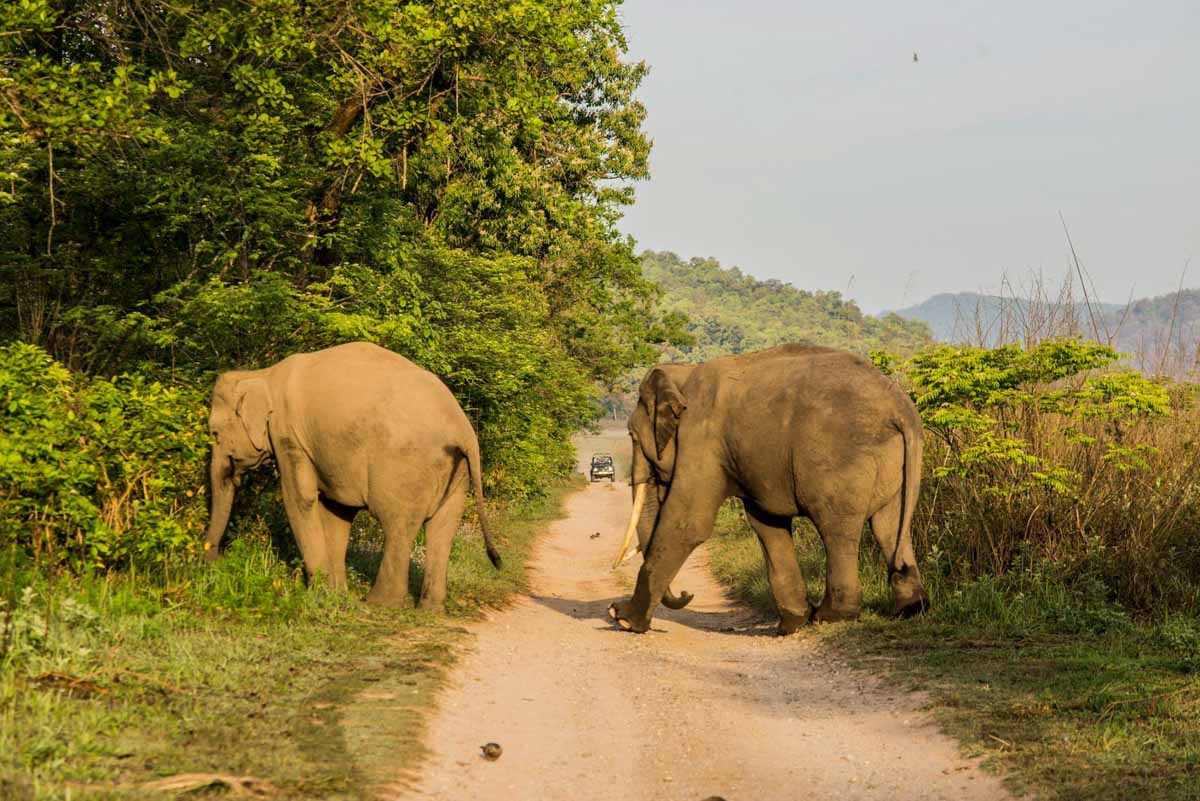 Elephants crossing our path at Corbett National Park
Elephants crossing our path at Corbett National Park
The landscape is dramatically diverse – the Himalayan foothills loom large on the horizon, the river Ramganga flows through the park, a jungle safari transports you from tall grasslands to dense forests to meandering streams. A treasure trove for bird enthusiasts with about 580 avian species, the forests here are always “alive with the sounds of music”.
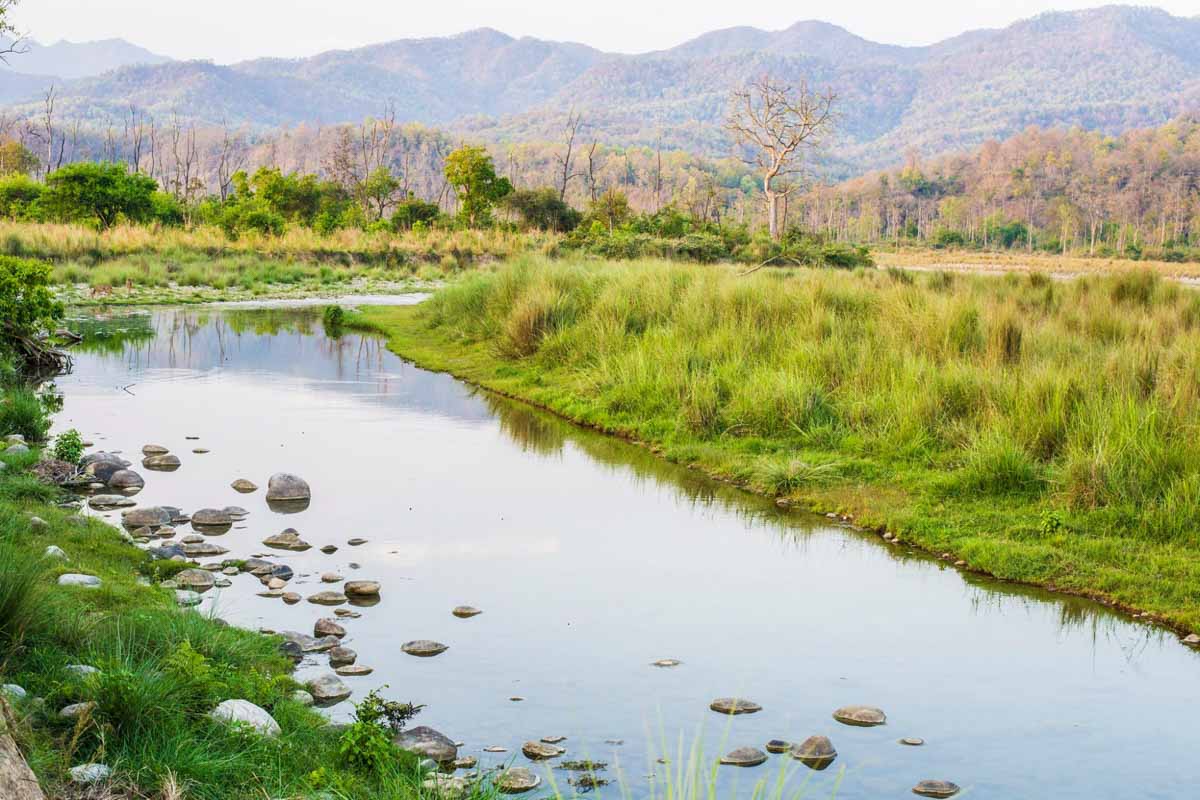 Can’t get enough of these landscapes!
Can’t get enough of these landscapes!
The Journey: Drive to Jim Corbett National Park
It was the final stretch as we made our way from Delhi to Jim Corbett national park on a family holiday. We had left behind the dusty towns on the route and were now headed to the gates of the park. While there are many resorts in the periphery, we chose to stay inside the park at Dhikala, among the six ecotourism zones at Corbett.
We had booked our Corbett tour with Tigerland, a reputed safari operator. At the gates of the park, our guide cum driver was waiting to accost us inside on a 4 by 4 jeep. We left our vehicle at the Tigerland office and embarked on a two-hour long journey to the Forest Rest House in Dhikala zone. We spotted coteries of bemused langurs, a pair of alert jackals, a shy barking deer, and a peacock flaunting his colourful feathers.
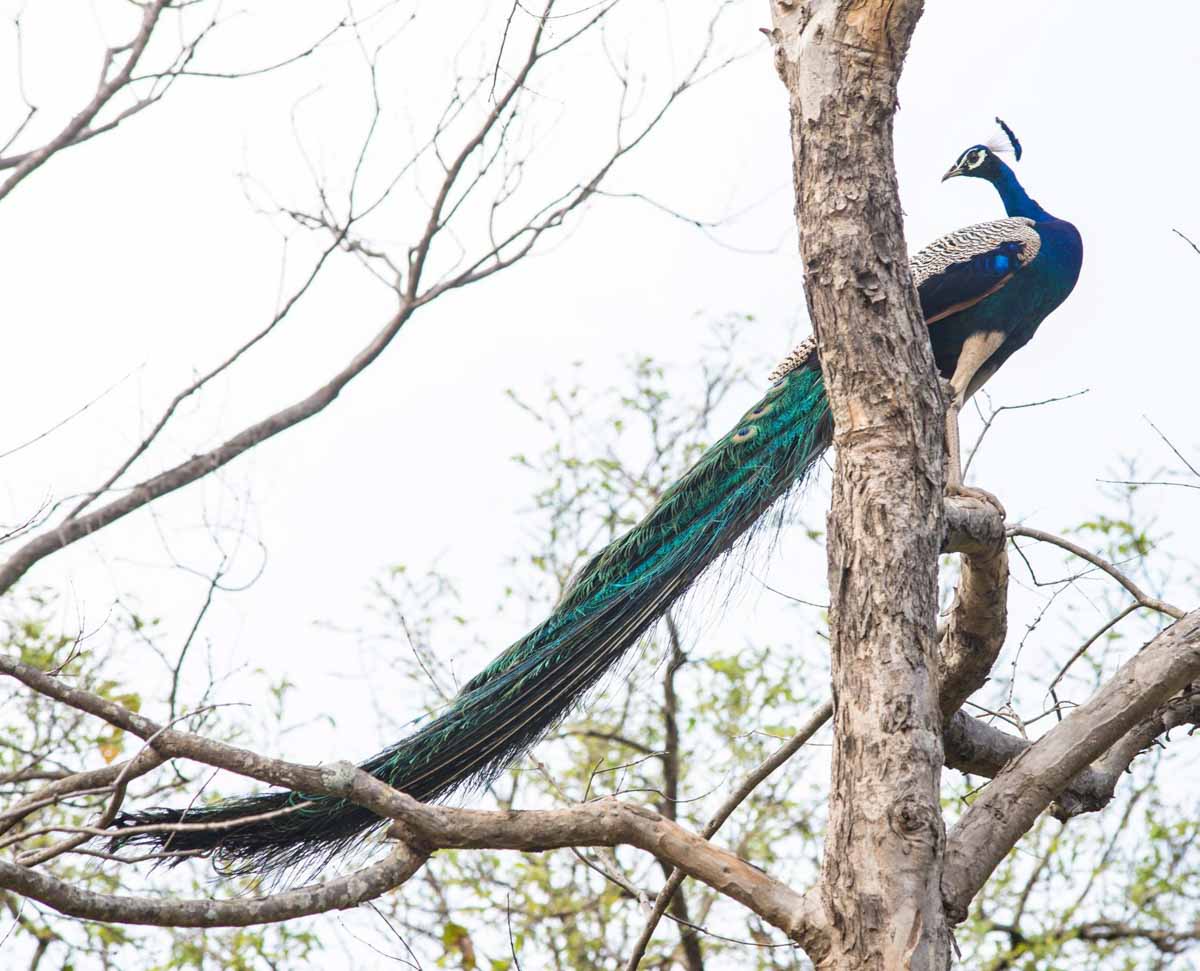 A majestic peacock welcomes us
A majestic peacock welcomes us
Silent is the Night
As dusk set in at Dhikala, the forest plunged into darkness – only a few lights atop the Himalayan foothills twinkled from a distance. The sky, the hills, the trees – they were all engulfed in a shade of deepest blue. The Ramganga flowed quietly, carrying silvery glints of the moonlight. “Wake up early next morning – we need to be ahead in the queue of safari vehicles,” our guide reminded us one final time before retiring for the day.
Morning: A Rip-Roaring Safari
At the break of dawn, we were huddled together in the 4 by 4 vehicle, a tad bleary-eyed. The rev of the engine woke us up with a start as we made our way on dusty mud tracks into the jungle. We listened to the familiar calls of the cuckoo. We watched many a pied kingfisher fly over the banks of the river. We smiled at the sleepy pot-bellied eagle owl, ogling down at us. We chased lapwings as they darted in and out of our path. And just when we were least expecting it, a Royal Bengal Tiger showed up, peering nonchalantly as it crossed the trail in front of us and disappeared into the bushes.
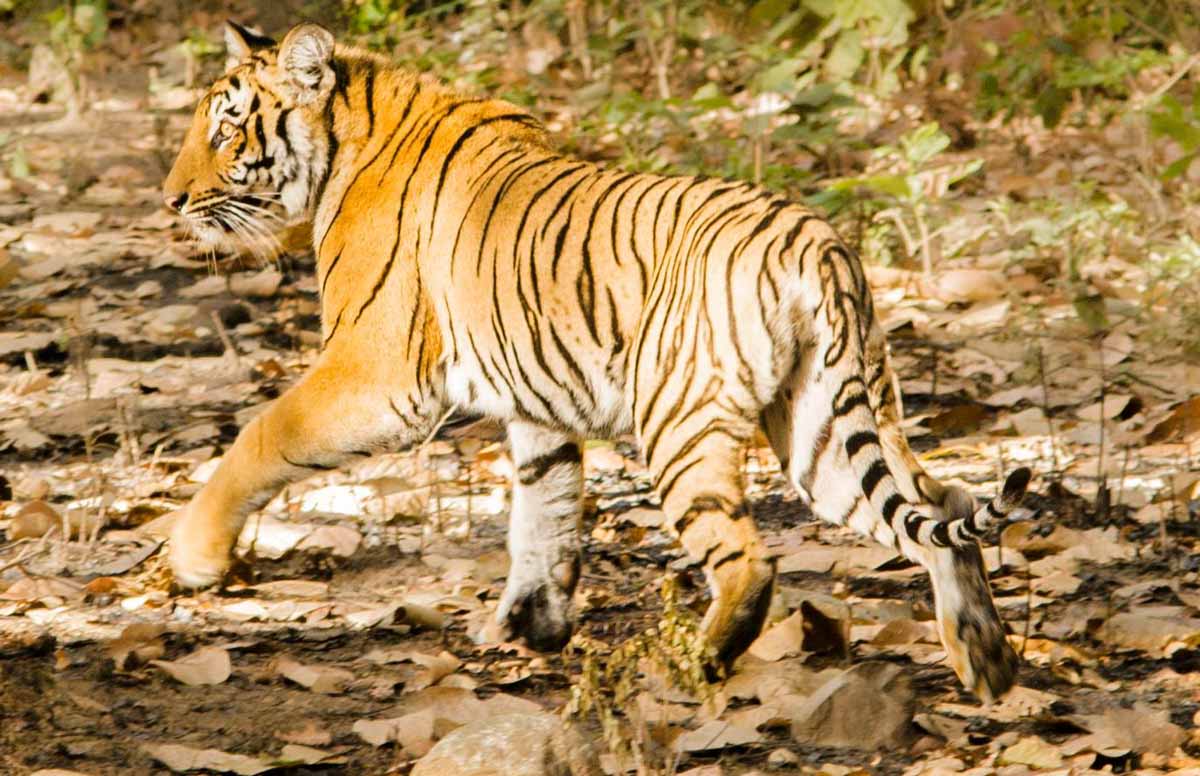 A lucky sighting: A tiger at Jim Corbett National Park
A lucky sighting: A tiger at Jim Corbett National Park
Afternoon: A Date with a Pachyderm
After lunch and a short siesta, we went on a leisurely safari atop a trained elephant. The mahout goaded the gentle giant as it swayed down with ease. The rays of the sun played peek a boo through the thick canopies. Emerging out of the mixed deciduous forests, the elephant sauntered into a vast open grassland. The sun, rapidly sinking over Ramganga, had painted a golden tint over the tall grass. A lone fishing eagle sat on top of a withered tree, perhaps admiring the panoramic views as much as we were.
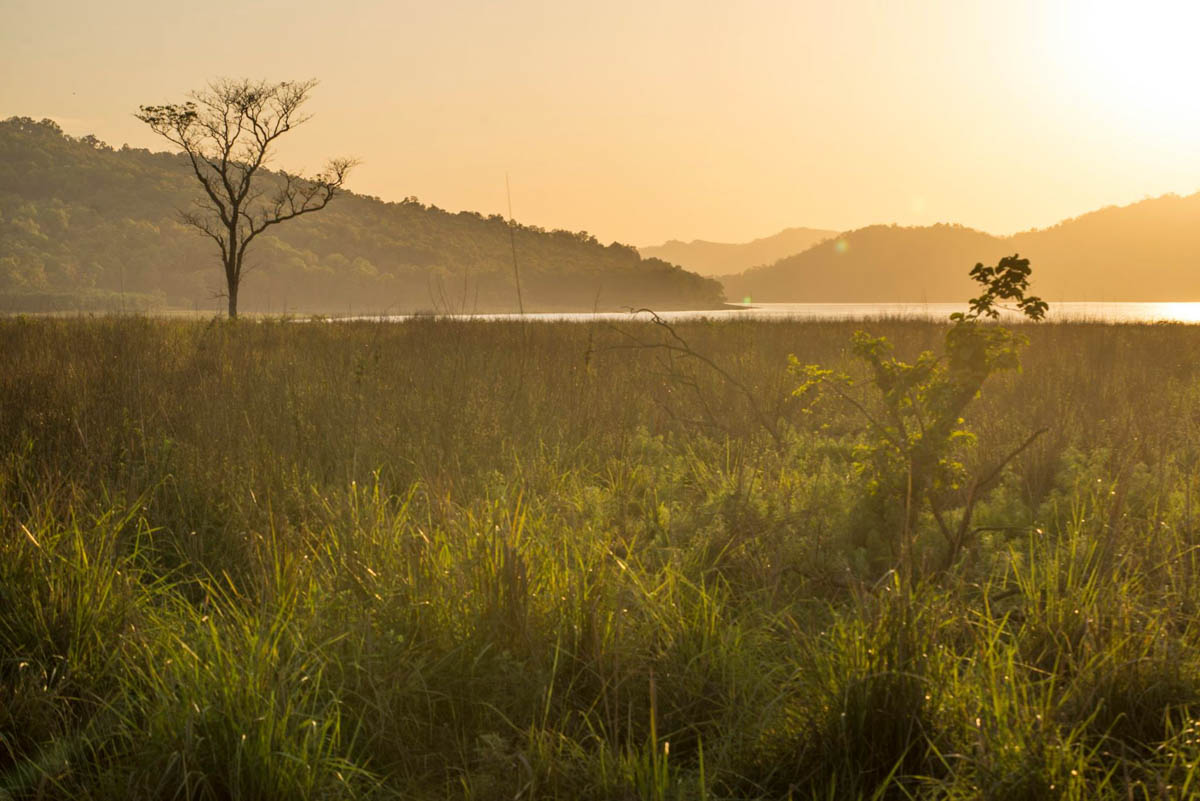 Sunset at Jim Corbett National Park
Sunset at Jim Corbett National Park
In addition to the national park, do visit the heritage bungalow of Jim Corbett in Kaladhungi. It has been now converted into a museum dedicated to the British hunter who later became a strong advocate for wildlife conversation. The museum contains Corbett’s personal belongings, paintings and sketches as well as manuscripts (Corbett authored many books, including the famous ‘Man-eaters of Kumaon’. The museum is open from 7 a.m. to 6 p.m. daily and remains closed only on the day of the ‘Holi’ festival.
A long weekend at the Corbett National Park, and we had perhaps not even scratched the surface. Memories of our journey lingered on. There was only one way to get over the blues – we decided to be back soon!
[tabs]
[tab title=”Best time to visit” icon=”entypo-book”]October to June. There are six zones inside the forest. Durga Devi and Birjani zone can be visited from mid-October to mid-June and Dhikala zone can be visited from mid-November to mid of June. Jhirna and Dhela zones are open through the year for day visits.[/tab]
[tab title=”Where to stay” icon=”entypo-book”]Namah and Club Mahindra Corbett are a couple of good options. Book a day visit safari in advance. Or book a Forest Rest House inside a Ecotourism Zone, the accommodation is basic but comfortable, with all meals included.[/tab]
[tab title=”Transportation” icon=”entypo-book”]Fly to Delhi and then drive down for about 300 kilometres through Hapur, Garhmukteshwar and the Moradabad bypass. You can also take Ranikhet Express, an overnight train from the Old Delhi railway station to Ramnagar, the nearest railhead.[/tab]
[/tabs]
More Articles With Activities
Home to a multicultural population, Chennai, the capital of Tamil Nadu, is a historical city of contrasts. Scorching hot during summer and unbelievably crowded, it is steeped in tradition yet charmingly modern and cheerful. Chennai never disappoints its visitors. If you only have 48 hours in Chennai — like I did, use your time to savour piping hot… Continue reading 48 Hours in Chennai
Singapore has for centuries, been a melting pot for colliding cultures. Once a key port connecting the major shipping lanes of the East, now an Asian business hub; this populous nation has always attracted many different cultures. The result of such a blending of differing societies is visible throughout the country; and whilst Singapore may… Continue reading Top 10 Singapore Attractions Not To Miss
Goa is a remarkably affordable holiday destination, complete with luxurious beaches, delicious food and stunning landscapes. It is a region of India where attitudes and dress codes are relaxed and visitors to this scenic region are guaranteed to find a wealth of memorable experiences. 7 Fun Things to do in Goa Beyond the Beaches 1)… Continue reading Goa Beyond the Beaches: 7 Great Things to Experience
A constant travel bug, I decided to explore this paradisiacal land of gorgeous beaches and one-of-a-kind sightseeing attractions. Goa — declared as the ‘fun capital of India’ — sits high on many travellers holiday bucket lists. Goa is a beach destination that is a magnet for tourists from India and abroad. Contrary to popular belief though, Goa is not just… Continue reading Goa Beyond the Beaches
The varied landscapes and climatic conditions in India offer natural habitats to about 400 species of mammals. Known for its rich biodiversity, India is home to many unique species – the Royal Bengal Tiger, the Asiatic Lion, the Greater One-horned Rhinoceros, the White-footed Fox, and the Asiatic Elephant amongst others. With over a hundred national… Continue reading The Ultimate Guide to National Parks in India